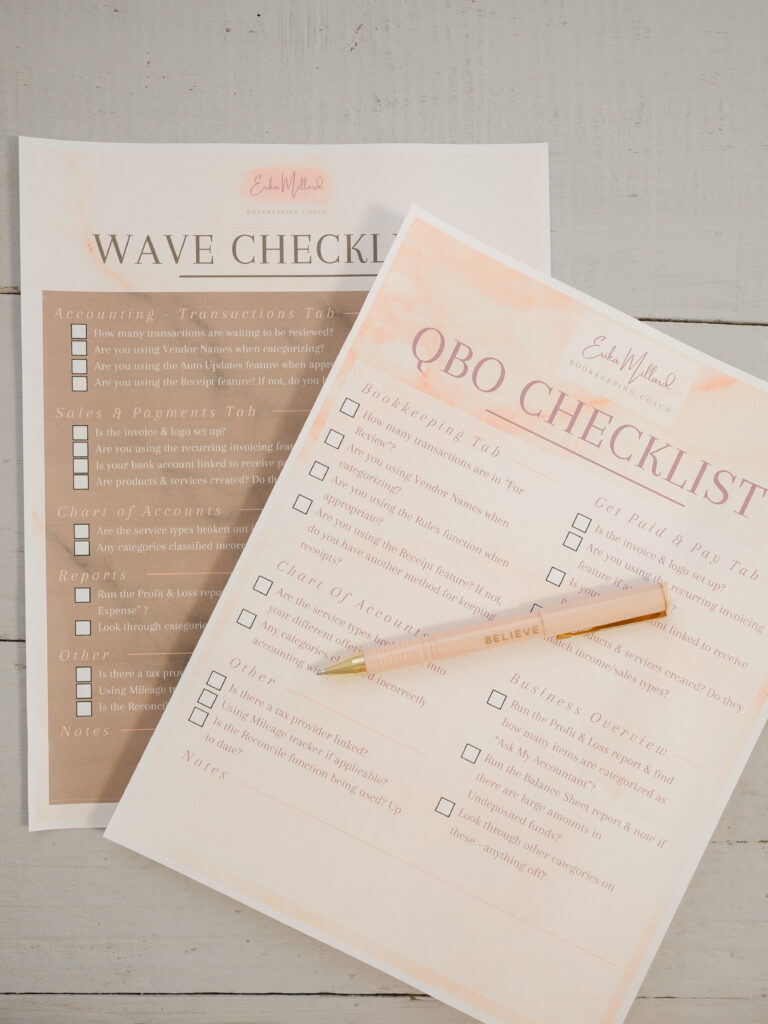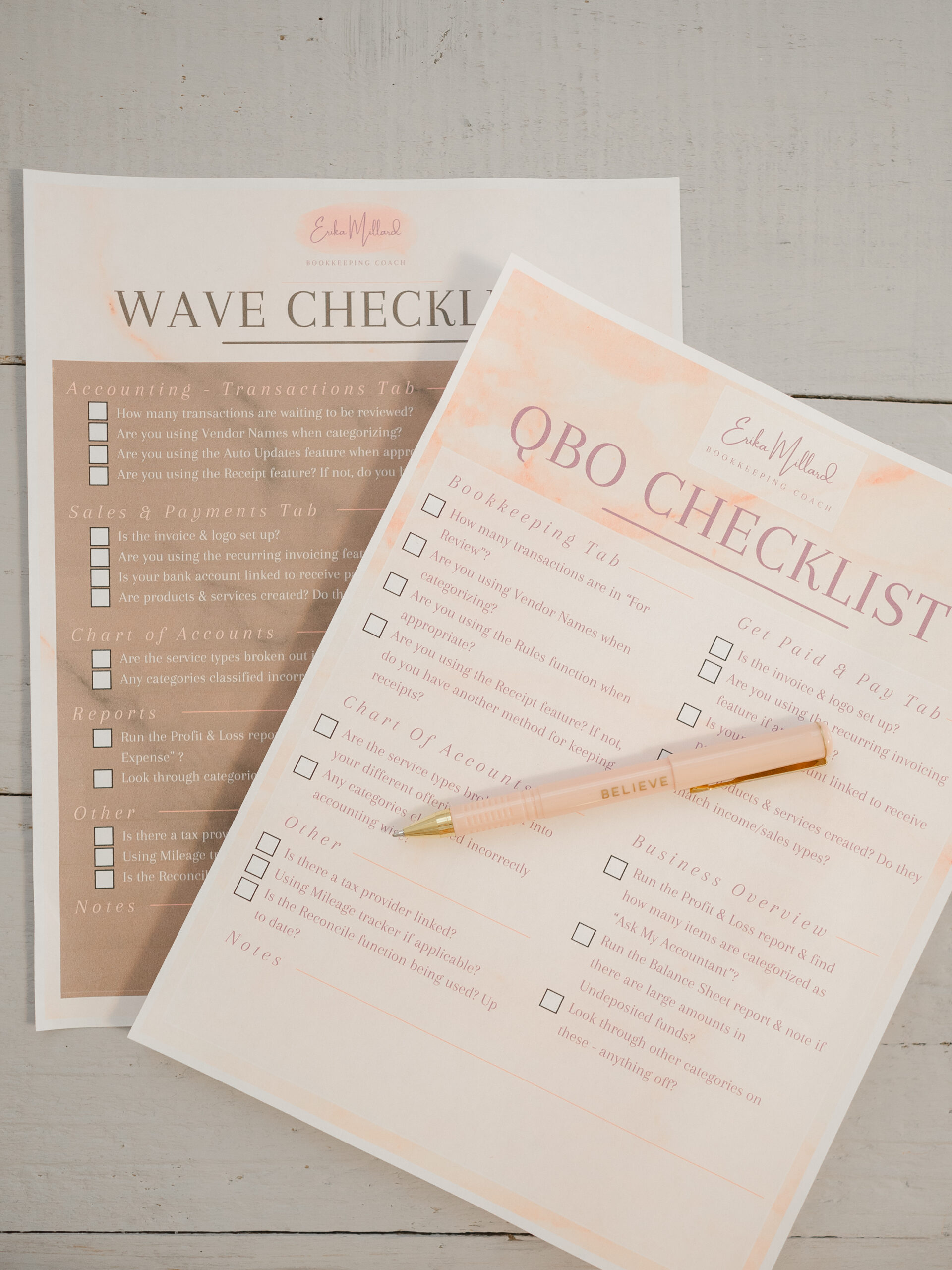
We are talking about two financial reports that every business owner should review each month. I know financial reports can seem very intimidating and even kind of fancy for your small business, but these are really great things to be looking at every month.
How do I get to financial reports?
Where do I even go to see those or view them? That’s what many people ask. This is a great feature of a bookkeeping system like QuickBooks because you can easily click a few buttons and run these reports and they look pretty. If you’re just using a spreadsheet, you’re basically essentially creating this report yourself. Either way, you can still do these steps, look through these things, and create these reports. If you’re using QuickBooks, this is a nice feature that they are pretty and available to easily run for you.
I often hear business owners ask what all these words on these financial reports even mean. I just want to normalize that for a second. When I was 18, my dad would travel. He was traveling near where I went to college. One day we went to dinner and I remember asking him when I was taking my first accounting class, “Dad, what do all of these words even mean?” It felt like a foreign language because, in reality, it was. There are not many places that you learn about all of these terms and we really aren’t taught them in school to this level.
I was confused in the beginning when I started learning about it. So I just want you to know if you feel like how did, having lived your whole life and not knowing any of these words, that’s pretty common. You’re not alone in that, but we’re not going to stay there. This is going to help you push past some of that so that you at least understand the basics. That way you’re not intimidated when you are asked to run those reports or send them to someone or have a conversation around it that you are educated enough to know what to look for.
I’m going to start this by saying these reports are not helpful if you have not done your bookkeeping. You’re going to hear me say that over and over. If you haven’t done your bookkeeping, you can’t be sure these reports are accurate. And two, we use this in the accounting and auditing world, but they’re not complete. This means there could be things left out or there could be duplicates because of the accuracy. If they’re not accurate or complete, then they’re really not helpful for you to be making decisions and reviewing.
Don’t do this step until the very end of the month after you’ve categorized all your transactions and you have reconciled your bank accounts.
The first financial report to look at is a balance sheet.
This is the one that usually confuses people the most because it has the most accounting terms. In simple terms, it is a report that shows what you own, what you owe, and what’s left over. That’s why it’s called a balance sheet because it’s kind of an equation. Your bookkeeping system is making all of these entries behind the scenes for you so you really don’t even see many of these terms, but these are the components of the balance sheet. In school, they taught us the acronym ALLO. ALLO stands for A- asset, L-liabilities, and O- owner equity.
An asset is anything that you own. Typically for online small business owners, this is cash. It is accounts receivable, which is money that people owe you that they haven’t yet paid. It is inventory or equipment. Anything like that is an asset.
The next section is liabilities, which is what you owe. This is where you’ll see your credit cards because you owe money on the credit cards. This is where you would record any loans or unpaid bills. Those are the main things that business owners will see as a liability money that you owe someone.
Then whatever is left over is equity. If you’re an LLC, this is where you’ll see payments to yourself, and owner’s equity. You’ll also see any personal things that you’ve accidentally recorded on your business books. That’s where you’ll see it in the equity section or any investments that you’ve made into the business. These are the terms.
Why would you want to review this report?
It gives you some key things to look at when it comes to how your business is doing. The first thing and one of the main ones is what we call liquidity. That is a fancy term for how easily or quickly you could pay off all of your debts based on the assets that you have. How easy would it be if every single person paid you what they owed you and then you took all of the cash that you had and would you be able to pay off all of the loans and credit cards and unpaid bills? That is one number that we want to be looking at, just to make sure that we haven’t taken out too many loans or too much debt compared to our assets. You can get into all these ratios and more complicated things as you grow.
Those are some of the key features to be looking at it early on or in the beginning stages of reviewing your report. Just getting familiar with the words that are on there, the sections, and then thinking through if you were going to sell the business, could you get rid of all the debt easily?
This will help you determine if you could take on more loans or if you could open another credit card. Because you’ll know whether cash is kind of low and maybe you don’t want more debt compared to the assets that you have. Hopefully that just gets your wheels turning a little bit on why you may want to start reviewing the balance sheet.
Also, this is another great process to do to catch any errors. Let’s say your bank account has a giant negative balance. Well, if you take a step back and think about it, would your bank really let you have a negative $50,000 cash balance? Probably not. So that might be a red flag and show you that there’s something not reconciled here or you just need to go back and review this. Also, check if you have a lot of uncategorized or miscellaneous assets or items on this report. Personally, I don’t love that because it doesn’t show you what it is so you have to go into it and dig into it.
That’s not the point of these financial reports. We want these reports to be simple and easy for you to just grab the information that you need. Those would all be a few more things that you can do to review and make sure that everything is looking correct.
The second statement is probably one you have heard more about.
The second financial report is the income statement
You may have heard it is also called the profit and loss report or the P&L for short. There are lots of names for the same report. This report is going to show you your income minus your expenses and give you a net number. Now, this net number is plus or minus some adjustments. Adjustments are what you pay taxes on. This report shows you how profitable you are and how efficient your business is. It shows you the money that’s coming in, the money that’s going out, and then what is left over.
Now again, we could get into more complex ratios and terminology but there are some things to review here. Some things to review here would be trends. I like to run a month to month profit and loss report in QuickBooks. It will show you every month side by side so that you can see the ups and the downs because that can be really helpful and even help highlight that there’s some seasonality to your business. Maybe there is a low dip in the summer and that happens every year.
Because of this, you could decide that next year you’re not going to freak out when that happens. You’re just going to know that this is how my business goes. And then you can plan even for how you’re going to pay yourself through that process. That’s just one small example of things and decisions that you get to make when you can see the numbers side by side and month to month like that.
You can also start to see which of your packages are selling more or less, and which of your marketing efforts are you spending the most money on. Is that actually generating the extra income like I want it to? All of those types of things you can see when you start to look at and run these reports.
One other thing that is worth mentioning when we’re talking about our P&L is you may want to categorize things as costs of goods sold. Some of those expenses that are directly related to delivering your product or your service – would be the cost of goods sold. Sometimes on your report, you will see an additional section that shows revenue minus the cost of goods sold equaling your gross profit. Then you’ll see more administrative and operational expenses and then you’ll see your net income. If you have that extra section, if you’re a little bit more advanced in your reporting, then that is how you see those breakdowns. Those are additional pieces of information that we can then make some calculations on.
Now, this is going to sound super nerdy. This is where the math might come in a little bit. You can start to see how much is it costs you to deliver this service compared to how much income you’re making. That can help you make decisions like is it time to raise my price? As I said, these are just some more sections. These can help you start to get into diving deeper into what this information is telling you.
Knowing how these two reports work together gives you a fuller, more complete financial picture. I hope that you can see that now. One will show you what you have and what you owe. The other shows you what you’re earning and spending. They’re slightly different, but they work together to really give a full picture of how your business is doing.
My challenge for you is to go run these two reports and ask yourself the following questions:
- What do you notice in your business?
- Is there something funky going on that needs to be fixed?
- Did you gain any insight into your business?
- Did you see a trend that you haven’t noticed before?
I would love to hear if you complete this challenge and what you learn about your business that you didn’t know before from these financial reports. I just want you to get more and more comfortable running these reports, looking at them, and then eventually getting to the point where you feel like you can make better decisions by looking at those numbers.
Listen to this episode!
